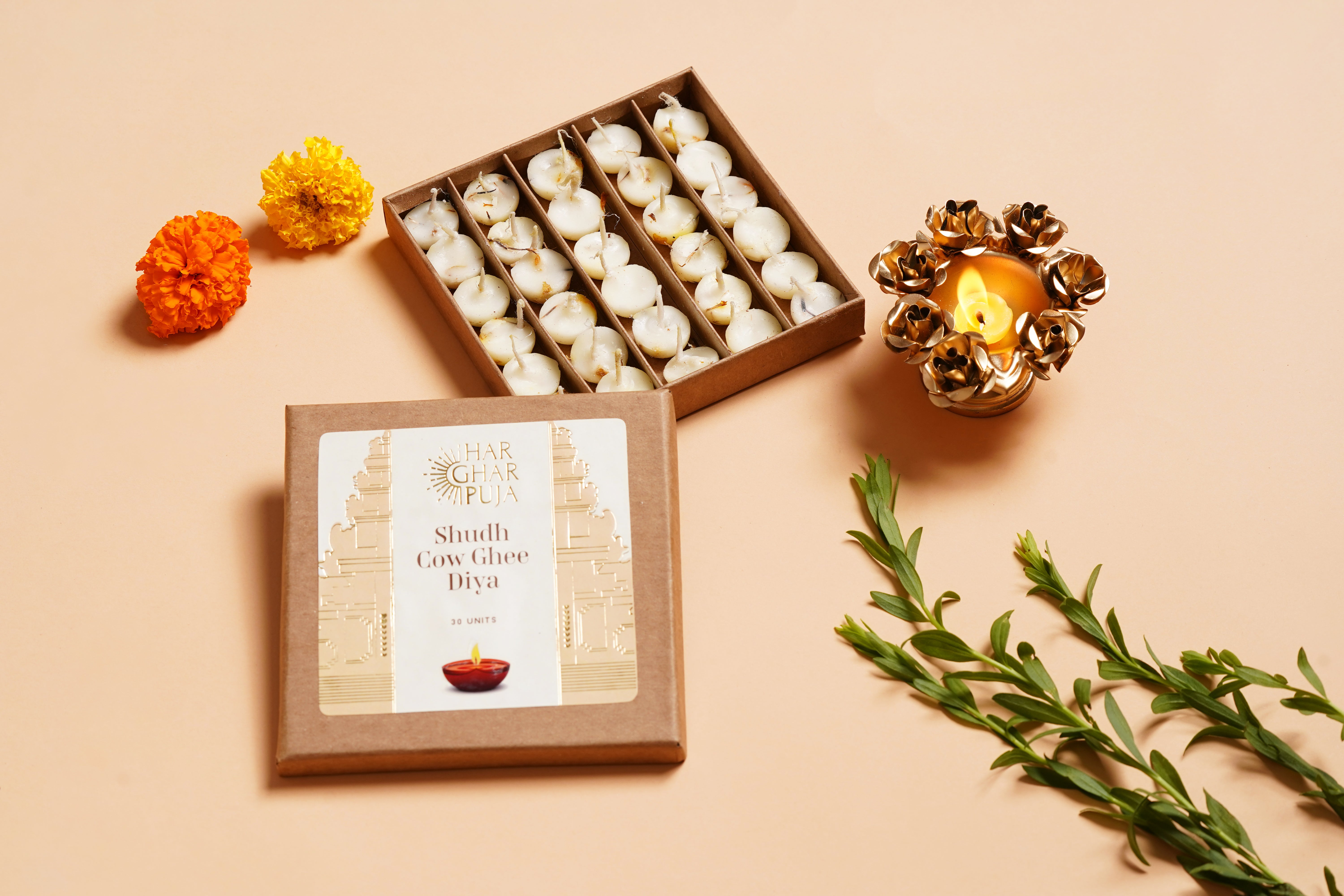Navratri is a festival dedicated to the worship of Goddess Durga and her nine divine forms. Each day is dedicated to one of her forms. On the second day of Navratri, devotees worship Maa Brahmacharini.
In this article, we explore the significance, story, and rituals associated with Maa during Navratri.
Table of Contents
Who is Maa Brahmacharini?
The word “Brahmacharini” is made up of two Sanskrit words: Brahma, meaning penance, and Charini, meaning one who practices it. Thus, Brahmacharini refers to the goddess who is a practitioner of the highest form of devotion and penance.
Maa Brahmacharini is the unmarried form of Goddess Parvati, who performed intense penance to attain Lord Shiva as her husband. In this form, she is seen walking barefoot, holding a Rudraksha mala (prayer beads) in one hand and a Kamandal (water pot) in the other.
The Story of Maa Brahmacharini

According to Hindu scriptures, after Goddess Sati self-immolated herself in her father’s yagna she was reborn as Parvati, the daughter of the King of Mountains, Himavan. From a young age, Parvati developed deep love and devotion towards Lord Shiv but Lord Shiva was deeply immersed in his ascetic life, detached from worldly desires. To win Mahadev’s love and companionship, Parvati embarked on a long journey of self-discipline and intense penance that lasted thousands of years.
During this rigorous penance, she survived only on leaves and later gave up even that, subsisting on air alone. Her devotion and austerity eventually impressed Lord Shiva, leading to their union. This intense penance of Parvati is what earned her the name Brahmacharini.
Symbolism of Maa Brahmacharini
Maa’s calm and composed form, holding the Rudraksha mala and Kamandal, signifies the journey of a seeker toward higher knowledge and spiritual growth. The water-filled Kamandal represents purity and simplicity, while the Rudraksha mala is a symbol of meditation and deep contemplation.
By worshipping Maa, devotees are inspired to follow the path of truth, devotion, and patience. Her blessings help them face challenges with courage and determination, ultimately leading to spiritual growth.
Rituals to Worship Maa Brahmacharini

On the second day of Navratri, devotees perform special rituals for Maa. The worship should be carried out with pure intentions and devotion. Here’s a step-by-step guide to performing her puja:
- Purify the Puja Area:
- Clean the space and sprinkle it with Ganga Jal (holy water) to ensure purity.
- Install the Idol or Picture:
- Place the idol or picture of Maa on a clean platform or altar. Decorate it with fresh flowers and garlands.
- Offer Prasad:
- Offer fruits and halwa.
- Light a Lamp:
- Light a ghee lamp (diya) and incense sticks to invoke her presence.
- Chant Her Mantras:
- Recite Maa Brahmacharini’s mantras with devotion:
- Dhyana Mantra:
दधाना कर पद्माभ्यामक्षमाला कमण्डलु।
देवी प्रसीदतु मयि ब्रह्मचारिण्यनुत्तमा॥
“I meditate upon the supreme form of Brahmacharini, who holds a rosary in one hand and a water pot in the other. O Divine Goddess, bless me with devotion and strength.”
Beej Mantra: ॐ देवी ब्रह्मचारिण्यै नमः।
- Perform Aarti:
- Conclude the puja with aarti.
Significance of Worshipping Maa Brahmachaarini

Maa Brahmachaarini represents the ultimate form of devotion and commitment. Worshipping her on the second day of Navratri brings mental peace, self-discipline, and the ability to persevere through challenges. She blesses her devotees with strong willpower and helps them overcome obstacles on their spiritual journey.
- Spiritual Growth:
Maa Brahmachaarini is a symbol of spiritual maturity and devotion. Worshipping her helps devotees strengthen their resolution and remain fixed on their path to spiritual awakening. - Mental Strength:
Those who worship Maa Brahmachaarini are believed to gain immense mental strength and stability. Her blessings enable them to handle life’s difficulties with patience and wisdom.
Maa Brahmachaarini’s worship during Navratri helps devotees in developing qualities of patience, discipline, and commitment. By following her teachings and performing her rituals with sincerity, devotees can experience spiritual growth and gain the strength to overcome life’s challenges.







